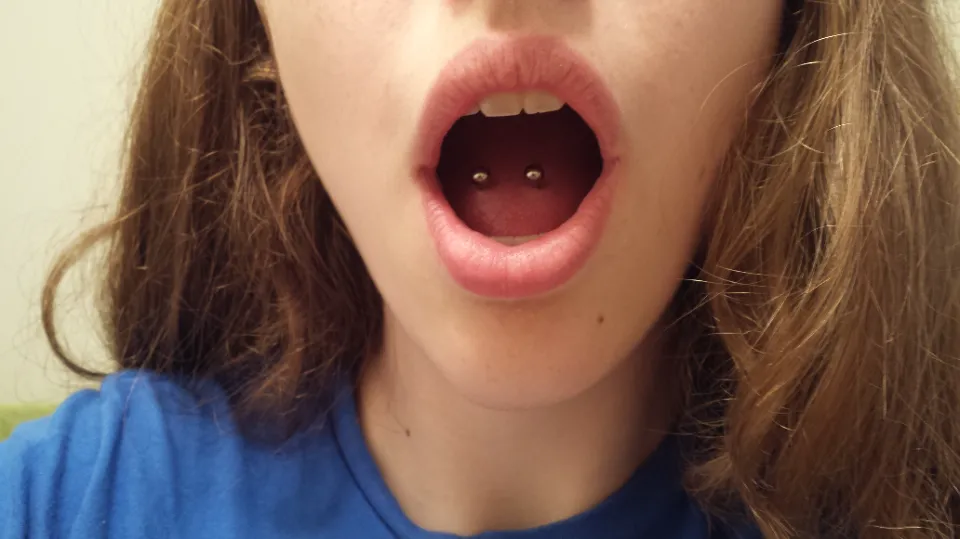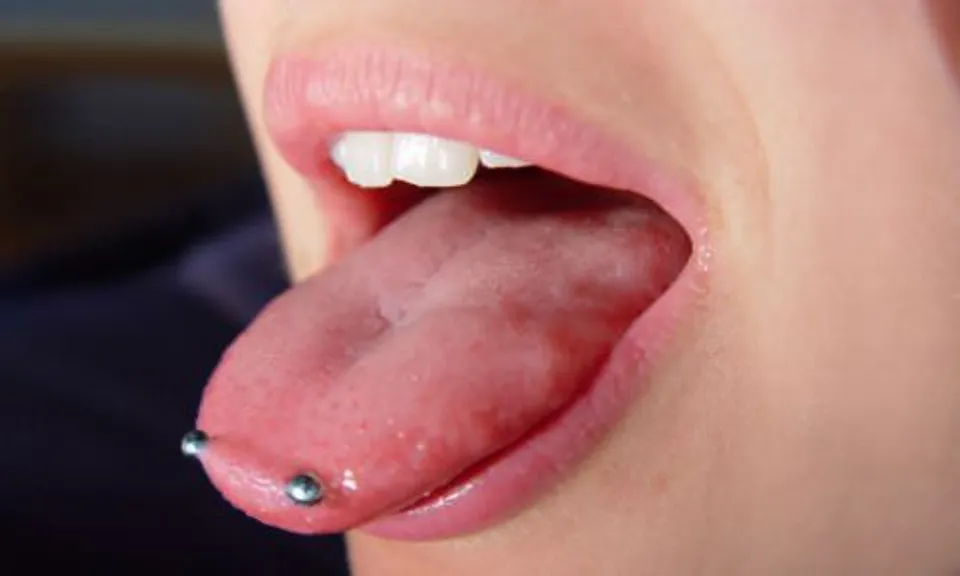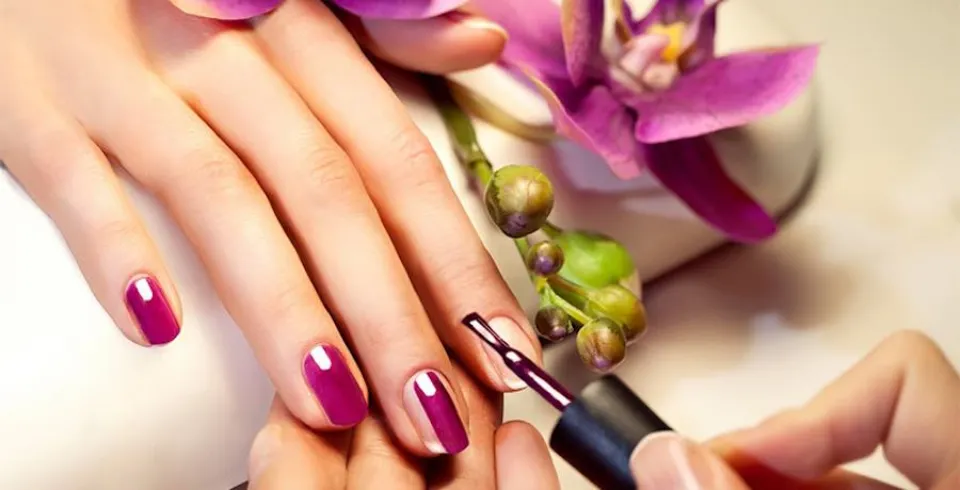A venom piercing is a double tongue piercing — one on each side of the tongue. You can find all the information you require about venom piercings down below.
Though not quite as intimidating-sounding, it’s sometimes referred to as a frog eye piercing because when you open your mouth, the balls on the jewelry look like frog eyes.
Continue reading for information on the procedure, cost, healing time, and pain level, which will assist you in deciding if this piercing is right for you.
What is a Venom Piercing?
Two symmetrically placed punctures on either side of the tongue make up a venom piercing.
This piercing is sometimes called “frog eyes” because of the resemblance when the mouth is open.
Read More:
Pros and Cons of Venom Piercing
Venom piercings have benefits and risks, just like any other piercing.
Check out the pros & cons below to see if this piercing is right for you:
How is Venom Piercing Done?
To make sure you’re a good candidate, the piercer will examine your tongue.
You will then pick out your jewelry and complete some paperwork, including a consent form.

While the next steps may vary a little depending on the piercer, most oral piercings follow similar steps:
- You’ll be given an antiseptic mouthwash to rinse with in order to lessen the amount of bacteria in your mouth.
- A body-safe marker will be used by the piercer to mark the entry and exit points for each barbell.
- To keep your tongue still while the needle is inserted, small forceps will be used.
- The next step is to pass a hollow, sterile needle up through the first marking from the underside of the tongue. After that, the ball is screwed on and the barbell is pushed through.
- On the opposite side of your tongue, the piercer will repeat this procedure.
- The piercer will wipe away any blood after you’ve once more rinsed your mouth with an antiseptic mouthwash.
What Types of Jewelry Are Used for Venom Piercing?
The most popular jewelry used for venom piercings is straight barbells. The entry and exit points of a barbell have two ball ends that thread into position. Those used for initial piercings need to be long enough to accommodate swelling — and there will be swelling.
You can switch out your jewelry for a smaller size once your venom piercing is completely healed.
Will Venom Piercing Hurt?
Yes, most likely. According to those who have venom piercings, it’s typically described as being significantly more intense than a 5 on a scale of 1 to 10. The second piercing may hurt more than the first, according to reports, and it is significantly more painful than a standard tongue piercing.
But it’s hard to say how painful it will be for you. Since pain is a subjective feeling, no two people will ever have exactly the same experience.
Read More: How Many Piercings Can I Get at Once?
What Risks Are Associated With Venom Piercing?
After getting your tongue pierced, it’s normal to experience pain, swelling, bleeding, and bruising. However, over the course of the following week, these side effects should gradually disappear.
However, tongue piercings do have risks in addition to the typical piercing risks.

Here’s a look at some of the potential risks:
- Infection. If bacteria are able to enter the wounds during the procedure or during inadequate aftercare, infections may develop.
- infections that spread through the blood. From contaminated needles, it’s possible to contract bloodborne illnesses like HIV, tetanus, and hepatitis B and C.
- Allergic reaction. People with sensitive skin who are allergic to nickel may experience an allergic reaction to the jewelry material.
- severe tongue swelling and airway obstruction. While some swelling is common, if it becomes excessive, it could obstruct your airway.
- Bleeding. If a blood vessel is harmed during piercing, severe bleeding may result.
- more saliva being produced. Drooling can occasionally result from tongue piercings increasing salivation.
- Teeth and gum issues. Your teeth and gums may become irritated and tooth enamel may be damaged if your jewelry rubs against them. If you unintentionally bite down on your jewelry, it could chip or crack your tooth.
- brain and heart abscesses. Though rare, there are documented cases of heart and brain abscesses — some fatalTrusted Source — caused by an infection traveling through the bloodstream following a tongue piercing.
- Nerve damage. Nerve damage from tongue piercings is possible, though it is also extremely uncommon. In most cases, this happens during the piercing, but in a 2006 caseTrusted Source, the jewelry irritated a nerve under the tongue connected to the trigeminal nerve and caused trigeminal neuralgia.
- jewelry ingested or choked on. It is possible to ingest or choke on broken or unsecured jewelry. Another justification for the significance of selecting high-quality jewelry and materials is this.
What’s the Venom Piercing Healing Time?

Your mouth contains a lot of bacteria, which can slow healing, particularly if you have two piercings. The healing time for a venom piercing is 6 to 8 weeks with proper aftercare and no complications.
Remember that not everyone heals equally quickly, and smoking and your general health can both slow healing.
What Kind of Aftercare is Involved in Venom Piercing?
Proper aftercare is crucial to reducing your risk of complications and promoting wound healing.
While healing, do:
- Avoid speaking and give your tongue a rest.
- For the first few days, consume only soft foods.
- Utilizing a soft-bristled toothbrush, brush your teeth twice daily.
- After meals, when you’ve finished drinking or smoking, and right before bed, rinse your mouth with diluted mouthwash or sea salt.
- Only use clean hands to contact your piercing.
- To reduce swelling, drink ice water or dissolve ice in your mouth.
- To reduce swelling while you sleep, keep your head elevated.
- Use a non-steroidal anti-inflammatory (NSAID) pain reliever available over-the-counter, such as ibuprofen (Advil) or naproxen (Aleve).
While healing, don’t:
- engage in any mouth-related sexual activity, such as an open-mouth kiss.
- Share mugs or serving pieces.
- Touch or play with your jewelry.
- Chew gum or anything that might be a breeding ground for bacteria, such as pencils.
- Do not use more tongue motion than necessary.
- Play any rough sports, or other physically abrasive activities.
- Before your healing is complete, take off the jewelry.
How to Clean Your Venom Piercing?

Look for alcohol-free mouthwash to use on a regular basis. To lessen your risk of infection, be sure to rinse your mouth out with mouthwash after eating or drinking.
Make your own saline solution by combining 1/4 teaspoon sea salt with 8 ounces of warm water to use for gentle cleaning twice daily.
In order to remove any remaining debris, make sure to swish the solution around in your mouth for a few minutes. For a piercing that is consistently clean, repeat this procedure twice each day: once in the morning and once at night.
How Much Does Venom Piercing Usually Cost?
Without the jewelry, the cost of a venom piercing can range from $60 to $100. Typically, a piece of jewelry costs between $10 and $30.
Your final cost will be determined by the studio’s popularity, location, experience level, and type of jewelry. Keep in mind to budget for a 20% tip when determining the cost of your piercing.
Final Thoughts on Venom Piercing
In conclusion, a venom piercing is a double tongue piercing — one on each side of the tongue.
It’s crucial to keep in mind that your tongue might be sore and swollen for a few days following your procedure.
Anti-inflammatory drugs like ibuprofen can help you feel better, as can putting an ice cube on your tongue for a few seconds. Cleaning your piercing on a regular basis will hasten the healing process.
FAQs about Venom Piercings
What is the Safest Tongue Piercing?
The medial lingual septum.
What is the Risk of a Venom Piercing?
Gum and tooth erosion. Since this piercing is situated in the middle of your teeth, there is a possibility that it could chip teeth or harm the gums.
What is the Difference Between Snake Eyes and Venom Piercing?
Pierces your tongue horizontally through the tip of the tongue. This horizontal tongue piercing is similar to venom piercing, but a venom piercing is located more on the sides of the tongue.
Are Venom Piercings Safe?
Yes, it is safe if you get it done by professional piercer.




